Nexus 6 vs Galaxy Note 4
Nexus 6 vs Galaxy Note 4




Hardware keys with a fingerprint reader • on-screen keys • where the fingerprint reader would have been


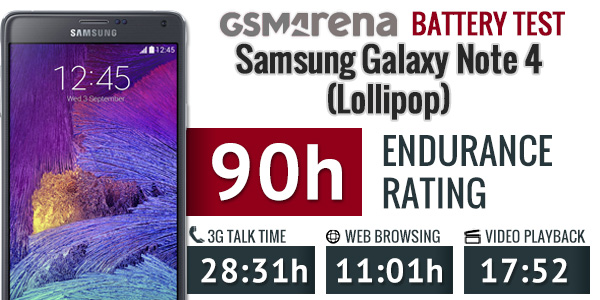
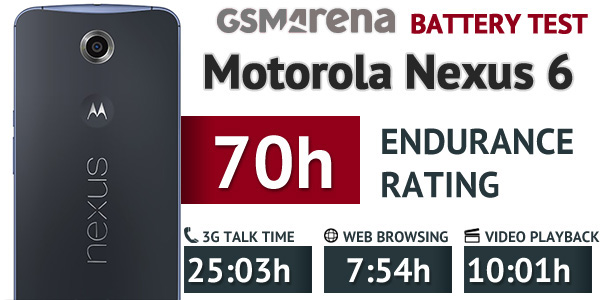


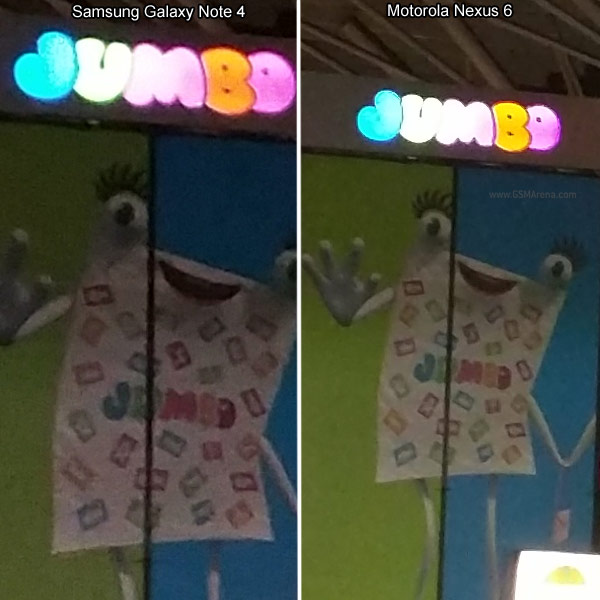

Introduction
Google and Samsung. The two pillars of Android are good at being partners, but their rivalry is even more exciting to watch. Especially when they pull out their best. The Nexus 6 and the Galaxy Note 4. The two want to be the defining Android device, the benchmark for all other phones to go by. What they certainly don't want is share - the fame, love, the profits.

Although the Samsung Galaxy Note 4 and the Motorola Nexus 6 come from very different company cultures, they are actually surprisingly similar - in a good way! They have a solid metal frame with a soft-touch plastic back, a large AMOLED screen with slim bezels, a beastly chipset and a quality camera with OIS. Yet, each has its own advantages.
Motorola Nexus 6 over Galaxy Note 4
- Bigger screen - 6" vs. 5.7"
- Fast-track Android updates
- Stereo speakers
- Basic water resistance
- Built-in wireless charging (Qi)
Samsung Galaxy Note 4 over Nexus 6
- Pressure-sensitive stylus functionality (S Pen)
- Split-screen multitasking
- More compact
- Storage expandable via the microSD slot
- Fingerprint sensor (PayPal-certified for all it's worth)
- Higher resolution still camera - 16MP vs. 13MP
- High FPS video mode (1080p @ 60fps, 720p @ 120fps)
- Heart rate and blood-oxygen sensors, UV sensor (offering mainly gimmicky functionality)
- IR blaster
Google is sub-contracting its Nexus devices and didn't favor Motorola (until recently a wholly-owned subsidiary) over other makers. Now that Motorola changed hands, Google saw it off with a bang, the first Nexus phablet. Samsung worked on two Nexus iterations too, but those days are gone. Now it likes to assert its leadership and TouchWiz is front and center to maintain brand identity.
What brought the two together is technology, the best of it. Google guided Motorola to get the best hardware available. Samsung went after the best components because they're trying to dominate the landscape by offering more features than anyone else.
The different corporate cultures do transpire in certain ways. Samsung wants to be a market leader - in business (S Pen attracts heavy note-takers), in e-commerce (fingerprint-secured mobile payments), in healthy lifestyle (with a bunch of sensors and relevant software).
Until now Google just wanted a platform to show off its software, but with the Nexus 6 it feels like it's promoting the entire Google ecosystem. There are stereo speakers (to support Google Play Music), a large screen (Play Movies), capable camera (for Google+ Photos and YouTube), but no expandable storage (you are supposed to use Google's cloud storage instead).
There's one thing the two companies have in common though, they want to be the ones steering Android as it continues its road to market domination. Google is pulling the reins through tight control over the OS, while Samsung is flexing its manufacturing muscle. The outcome here will depend on both hardware and software. Jump to the next page to see which way the first battles for the Android throne go.
Hardware comparison
These days a smartphone spends more time waiting for its user to do something than the other way around. The two phablets use the two of the fastest chipsets available, so you have lots of power to run whatever you like on those XL screens.
The Samsung Galaxy Note 4 packs a 5.7" screen, same size as its predecessor but with nearly 80% more pixels. The Motorola Nexus 6 rounds things off to a 6" sharp, at the same resolution: QHD or 1,440 x 2,560px. Both can fit as much content as the user can take in.
We'll go into more detail about screen quality later, but in terms of ergonomics both can be a challenge to use single-handedly. However, neither will leave you wanting for more room. One difference comes from software in that Samsung lets you run two apps side by side, while Google somewhat squanders the large screen and the powerful chipset on just one.
Our new screen-to-body ratio reading in the specs pages tell us that the bezels around the two screens are proportionately equal, though they are used for different things. Motorola followed HTC and Sony in adding front-facing stereo speakers so that the audio experience matches the visual.
Samsung, however, keeps the vestigial hardware keys below the screen, leaving no room for a speaker. This time it's by necessity though - the fingerprint reader lives below the Home key. The story goes that the Nexus 6 would have had a fingerprint sensor too, in dimple on the back where the Motorola logo is now but Apple bought the sensor supplier.



Hardware keys with a fingerprint reader • on-screen keys • where the fingerprint reader would have been
Google Wallet predates Apple Pay by three years yet Apple's solution garnered more buzz and therefore traffic. We can debate whether the added security of the fingerprint sensor is what helped the iPhone succeed, but Samsung clearly wants a piece of that action.
The screens on both phablets are supported by a metal frame that's left exposed on the sides. A design used successfully by many companies (like Nokia and Sony), this gives the phone a premium feel without making it as heavy as a metal unibody design. It also simplifies the internal arrangement of the antennas, important when you're looking to squeeze the components in the smallest volume possible.
More important for the looks of the device is the material on the back - plastic in both cases, but with a different finish. Samsung continues its fling with faux leather, which looks good and does well at hiding fingerprints and scratches, while Motorola went for a simple matte, soft-touch finish.
The metallic Nexus logo in line with the Moto logo and the camera make it attractive, but the plastic is a fingerprint magnet. Keeping the expansive surface clean can become a chore. It's a shame that the Moto-maker customization options don't expand to the Nexus.
Samsung's design of the back is less attractive with the protruding camera and the hole cut out for the LED flash and the heart rate/blood-oxygen sensor. The single loudspeaker on the phablet is in the bottom left corner.
The Nexus 6 camera is flush and features a rare ring flash. It's only provisionally a "ring flash" as it has just two LEDs, but the plastic ring does help to diffuse the light a bit. Near the bottom is the noise-cancellation mic, while the Note 4 positions its mics on the top and bottom.
The metal frames of the phablets house the ports and slots. For the Motorola this means just the nanoSIM and 3.5mm audio jack on top, plus the microUSB port on the bottom. This is a SlimPort so it offers a Display Port link to hook up external monitors (compatible with HDMI too).
The Galaxy Note 4 puts the 3.5mm jack on top and microUSB port on the bottom too. This one is an MHL port so it can turn to an HDMI port with an adapter. The Samsung phablet also has an IR blaster on its top so it can be wielded as a remote control for your digital equipment at home.
More importantly it has a microSD card slot below its removable back cover, so storage shouldn't be a concern even if you keep tons of 2160p videos or FLAC music or advanced 3D games. The Nexus 6 comes with 32GB of built-in storage as standard, but power users might want the future-proofing of the 64GB version.
Speaking of what's below the back cover, the two phablets have the same battery capacity of 3,220mAh. We would have thought that the Nexus 6 being bigger in every direction than the Galaxy Note 4 can spare room for some more but that's not the case.
One last thing before we go - the Nexus 6 has basic water resistance, similar to the other Motorola-made phones of late. We say "basic" because it doesn't have an official IP or MIL-STD rating and you shouldn't take it into the pool, but it should easily handle a splash of water.
Winner: Samsung Galaxy Note 4. This was tough to call, but the Galaxy Note 4 really improved the looks of the series and we prefer the faux leather back to the fingerprint-prone plastic of the Nexus 6. The fingerprint sensor, the IR blaster, the expandable storage and the user-replaceable battery are a hard bunch for the Nexus 6 to match.
The Motorola Nexus 6 is a very attractive device in its own right and we like that it's splash resistant. The stereo speakers, and the flush camera with ring flash are great too. It was a close call and we would understand if you rank these two the other way.
Display comparison
Both screens are AMOLEDs with QHD resolution, but they do differ in size. The Samsung Galaxy Note 4 has a 5.7" screen, while the Motorola Nexus 6 display measures 6" (5.96" to be precise). This translates to around 10% more screen surface area, but keep in mind that a chunk of the screen is often reserved for the on-screen keys, which the Galaxy Note 4 doesn't have to worry about. On the Nexus, the keys do hide in multimedia apps, so photos and videos can use the entire screen.
Anyway, the difference in pixel density (515ppi vs. 493ppi) is negligible. More important is the Gorilla Glass that guards the screen - Samsung used Gorilla Glass 4. The difference between it and the 3rd iteration found on Motorola's phablet is the new version can be made thinner, while keeping the same toughness.


AMOLEDs have a reputation for oversaturating colors, but that's not an issue on the Galaxy Note 4. Samsung did an excellent job of producing one of the most accurate displays on the market and with the mode selector in the settings you can still go back to the vivid, saturated colors if that's what you prefer.
The Motorola Nexus 6 screen is more saturated than the usual IPS display and there are no color-correcting options. Another thing that affects the colors is viewing angles. The Galaxy Note 4 keeps colors steady, while the Nexus 6 screen shows a slight green tint at extreme angles. It's a minor complaint as it's not an issue in regular use.
Both screens are pretty much equals in terms of maximum brightness. They are a bit dim compared to LCDs, but they make up for it with better sunlight legibility. Note that the two screens react differently to the brightness slider. When both sliders are at half, the Galaxy Note 4 is at 75% of its maximum brightness, while the Nexus 6 is closer to 30%.
| Display test | 50% brightness | 100% brightness | ||||
| Black, cd/m2 | White, cd/m2 | Black, cd/m2 | White, cd/m2 | |||
| 0 | 291 | ∞ | 0 | 399 | ∞ | |
| 0 | 149 | ∞ | 0 | 372 | ∞ | |
| 0.14 | 109 | 763 | 0.72 | 570 | 789 | |
| - | - | - | 0.69 | 775 | 1127 | |
| 0.17 | 208 | 1197 | 0.52 | 705 | 1361 | |
The sunlight legibility readings are some of the best we've seen thanks to the low reflectivity of both screens. The Samsung Galaxy Note 4 is close to the top, with only the Galaxy A3 beating it (the Nokia 808 has been retired) The Motorola Nexus 6 lands a bit lower, partly because of its lower maximum brightness. It's still one of the best displays to use outdoors though.
Sunlight contrast ratio
- Nokia 808 PureView4.698
- Samsung Galaxy A34.241
- Samsung Galaxy Note 44.033
- Samsung Galaxy Note 33.997
- Apple iPhone 53.997
- Samsung Galaxy A53.895
- Apple iPhone 63.838
- Samsung Galaxy Note Edge3.799
- Motorola Nexus 63.543
- Samsung Galaxy mini 21.114
The Samsung Galaxy Note 4 features the trademark S Pen stylus. This generation was improved with double the pressure sensitivity levels, around 2,000. Unlike touchscreens which are binary (touching or not touching), the S Pen offers a more natural handwriting experience as applying more pressure leaves wider marks, just like pens and pencils work with actual paper.
The S Pen has a button on it (which works even though the stylus doesn't have a battery), which can be used to trigger alternative actions with the stylus. If you use the S Pen a lot, you might consider the premium Montblanc, which is the size of a real pen and more comfortable to hold. Like a fountain pen, it has swappable nibs, which imitate different real-world writing instruments.
Winner: Samsung Galaxy Note 4. The display is smaller, though there are no on-screen buttons to eat into the available room. It's also slightly brighter and slightly better in direct sunlight. The bigger advantages however, are the color accuracy and display modes that let you tweak saturation and white balance.
The Motorola Nexus 6 has an excellent display and is mostly let down by the software, which doesn't have the option to adjust the colors.
Connectivity
In terms of connectivity, both phablets are equal and have pretty much everything you're likely to need. They support the latest LTE and Wi-Fi standards, plus a host of other wireless and wired features.
Note that the Samsung Galaxy Note 4 comes in two versions - one with a Snapdragon 805 chipset and another one with an Exynos 5433. The latter supports "only" 150Mbps downlink speeds over LTE, while the Snapdragon 805 version (also used in the Nexus) goes up to 300Mbps. Both upload at 50Mbps max.
While LTE coverage has greatly improved in recent years, real-life speeds are still well below what any of these handsets offers as a theoretical maximum.
Both phones support Wi-Fi calling. This means regular voice calls and text messages can be routed through your Wi-Fi network, great if cell signal in your location is low. This also works abroad on some telecoms, which is even better. Of course, the feature is carrier-dependent and may not work at all on your cellular network.
Locally, you can max out your home internet connection with Wi-Fi ac or share your phone's speedy LTE connection with other devices.
Bluetooth 4.1 is on board to connect to wearables, but the Galaxy Note 4 also offers ANT+, which can be used to integrate additional sports sensors into the S Health app.
Another winning card up the Note 4 sleeve is the IR blaster, which can remotely control a wide array of standard home appliances - it's not limited to HDTVs or set-top boxes.
For positioning, both phones can connect to GPS or GLONASS satellites, but the Note 4 also manages the Chinese Beidou for all its worth. Snapdragon 805 should definitely support it, but Beidou is not listed in the official Nexus 6 specs.
We already mentioned the two wired connections. These days there's not much difference between SlimPort and MHL (new adapters no longer require external power), so it's a matter of knowing which adapter you need to buy. Some TVs support those standards natively, so that's something to check.
Both support wireless TV out, but different formats. The Nexus 6 only supports streaming to a Chromecast, while the Galaxy Note 4 can do that as well plus stream over the Miracast protocol. The Chromecast was a best-seller on Amazon, but there are plenty of TVs out there that only support Miracast (which does have a reputation for compatibility issues).
Winner: Samsung Galaxy Note 4. ANT+, Miracast and Beidou are small advantages, but advantages nonetheless. The IR blaster coupled with Miracast can easily create a no-wires, no-remote media setup at home.
This is a slim victory though, these things don't hurt Nexus 6's desirability all that much. Also, we found that Miracast is just disabled by software and can be turned on with a build.prop tweak.
Battery life
We waited until the Samsung Galaxy Note 4 was updated to Android 5.0 Lollipop before we ran the battery tests as Lollipop has a number of power-saving optimizations over KitKat. Keep in mind that this is the Snapdragon 805 version of the Note 4, so both phablets have the same chipset and run the same Android version. They have the exact same battery capacity too of 3,220mAh.
Both phablets will literally last a whole day of calling, the Motorola Nexus 6 clocks in at 25 hours while the Galaxy Note 4 goes 28 and a half. Those are some excellent scores.
The Galaxy Note 4 is a long distance runner when it comes to web browsing too, giving you 11 hours if you start at full charge. Web browsing is a key discipline for phablets, there's no substitute for screen size if you have to read more than a few tweets. The Nexus 6 does well here, but it lasts three hours less than the Samsung.
If watching videos is why you want a phablet rather than web browsing, then the scales are again tipped towards the Galaxy Note 4. It lasts nearly 18 hours as opposed to the 10 hours of the Nexus 6. Yes, the larger screen with front-facing stereo speakers make for a nicer experience, but when it comes to longevity, the Nexus 6's is battery performance is dwarfed by the Note 4.


With winning all three tests it should come as no surprise that the Samsung Galaxy Note 4 gets the higher Endurance rating of 90 hours. The Motorola Nexus 6 is a solid performer with 70 hours but generally, you can expect to get a day less from it between charges.
Speaking of charges, the Nexus 6 support Qi wireless charging so it's pretty easy to top off. Both phablets offer Qualcomm's Quick Charge 2.0, which will put your battery from 0% to 60% in just half an hour.
You can read more about our testing procedure here, but here's the short version - we test devices with their brightness sliders set at half which, as we saw in the previous chapter, means the Galaxy Note 4 is pushing out nearly twice the nits.
Winner: Samsung Galaxy Note 4. It should last you one day longer with moderate use, while heavy users will see an even bigger advantage in web browsing and especially watching videos. The Galaxy Note 4 also has a removable battery so you can pop in a fresh one or install an aftermarket battery pack.
The Motorola Nexus 6 has excellent battery life measured against the average mobile device, though even at lower actual brightness can't match the Note 4.
Loudspeaker
The Motorola Nexus 6 comes with a built-in advantage of having two speakers smack on its face. This is the best setup for multimedia - the speakers don't get muffled when you leave them on a table and the sound is directed right at you when you watch videos.
The sound quality is very good and while it won't replace your home audio setup, it's great for impromptu parties without having to lug a Bluetooth speaker around.
The Samsung Galaxy Note 4 has just one speaker and it's placed on the back. That leads to some muffling issues and is certainly not as nice for watching a video. It's a very loud one though, so it does an excellent job of notifying you of incoming calls or other alerts.
The Nexus 6 posted nearly identical results in our three tests categories - voice, music and ringtones - which suggests it has been optimized to produce all frequencies evenly. Great for music, bad if you just need loud sound and you're willing to sacrifice quality.
| Speakerphone test | Voice, dB | Ringing | Overall score | |
| 66.5 | 66.2 | 66.3 | Below Average | |
| 67.3 | 65.7 | 66.5 | Below Average | |
| 70.2 | 66.6 | 80.2 | Good | |
| 74.7 | 73.5 | 81.6 | Excellent | |
| 76.9 | 73.6 | 82.7 | Excellent |
Winner: Tie. The Motorola Nexus 6 offers a superior sound experience with its stereo speakers but they are not as loud as the Note 4's. Since we deem sound quality equally important to loudness, we figured this one's a tie. But if you have it otherwise, feel free to adjust the score depending on your personal preferences (a point that's valid for all our chapter scores).
Camera features
The Samsung Galaxy Note 4 packs a 16MP image sensor sitting behind an f/2.2 aperture, while the Motorola Nexus 6 has a 13MP sensor and a wider f/2.0 aperture. Both are optically stabilized but the sensor in the Samsung phablet is widescreen (16:9 aspect ratio), while Motorola used a standard 4:3.
The optical stabilization should help with low-light performance, but the Nexus 6 has a lead - the wider aperture, but also the dual-LED ring flash. The Note 4 has only one LED.
For selfies, the Galaxy Note 4 has the clear lead with a 3.7MP camera (matching the QHD screen's resolution exactly) and f/1.9 aperture. The Nexus 6 has a standard 2MP shooter.
In terms of software, both companies have their own camera. The Nexus 6 runs the Google Camera by default, which includes HDR+, Panorama and Photo sphere plus Lens Blur. The UI is minimalist and relies on pulling out hidden elements with edge swipes.
Samsung's camera offers more shooting modes, several of which are hidden by default and you can download more as needed. This camera offers a more standard menu-based system though it has been greatly simplified from the feature-overload of previous Samsung designs.
We'll try out some of the individual modes to see how they perform.
That's it for still shots, video recording on both phablet maxes out at 2160p at 30fps. The Galaxy Note 4 disables stabilization at this resolution though.
Samsung does have high frame-rate modes, 1080p @ 60fps and 720p @ 120fps, while the Nexus 6 shoots only at 30fps. The smoother motion enabled by high-fps modes can make a great difference in fast-paced scenes, plus you can try slow motion effects.
The advantage in selfie photos of the Samsung Galaxy Note 4 extends to video too, it records at 1440p. That's the middle step between 1080p and 2160p and exactly four times as many pixels as the 720p video that the Motorola Nexus 6's front camera manages.
Winner: Samsung Galaxy Note 4. Selfie cameras are a new battleground for phone makers, but a hotly disputed one and the Note 4 easily wins this round. It also offers high-fps video modes, which can be vital for some scenes. It also packs more camera options out of the box.
The Motorola Nexus 6 has the interesting ring flash, though two LEDs are not quite enough to win a crown. The Acer Liquid S2 had four LEDs in a circle, for example.
Photo quality comparison
We mentioned the difference in aspect ratio, the widescreen Galaxy Note 4 camera vs. the more traditional 4:3 shots of the Nexus 6. Laying photos on top of each other we find that the Motorola has a fairly wide lens so if you put it in 16:9 mode it will capture almost the same width of the scene.
This comes at the expense of resolution and the Nexus is already at a deficit. The Galaxy Note has more pixels to cover the same objects, which will give it a boost in image detail.

We collected crops from several of the photos we shot with both phablet. As you can see, things appear larger in the Galaxy Note 4 photos because of how resolution and field of view balance out.

The top row makes it easy to compare color rendering (it has the three primary colors) and sharpness (with black on white text).
The Samsung camera clearly boosts the colors a bit, not as much as it has historically but it's still noticeable next to the Motorola camera. You can see it also pumps up the contrast, which makes the black on white text pop more and the red logo more defined.
The colors in the Nexus 6 image stay closer to reality and white balance is more accurate (the Note tends to go a bit warm). The image also looks less processed overall, without the contrast boost and extra sharpening that Samsung does.
The second row shows the rough texture of a stucco wall. It's a challenging texture for digital cameras as its complexity can be mistaken for noise and removed from the image, which seems to be what's happening with the Nexus 6 shot. There's still some detail left, but a lot of it is smoothed over. The Galaxy Note 4 leaves a lot more of the detail in.
The third row shows the transition between shaded and sunlit parts of the building. Both phones show good dynamic range in this difficult transition with little in the way of overexposed or underexposed areas, no loss in detail or a spike in noise.
After dark, we went to take a few more shots to see how both cameras do in the dark. To make things easier to compare we adjusted the exposure compensation until we got as close as possible to the same shutter speed and ISO setting.

In this particular shot that meant +0.5EV on the Galaxy Note 4, while the Nexus 6 was left at 0EV. The result is 1/17s and ISO 320 for the Samsung and 1/20s and ISO 294 for the Motorola. Both of those can rely on optical image stabilization, but it's good to see they don't drop the shutter speed too low.
That would blur any moving objects and is good only for static scenes. The results are pretty similar give or take and we can't pick out a clear-cut winner in this department.
Winner: Samsung Galaxy Note 4. The Nexus 6 still camera has a lower resolution sensor and still manages to keep up to the Note 4 in a lot of respects but in the end of the day, the Note 4 camera did equally good or better in most tests, so it gets a well-deserved pat on the back. Both offer an excellent all-round performing still camera.
Google is the major driving force behind Android development, while Samsung is reigning as the biggest manufacturer of Android devices. The two companies have collaborated in the past, but now they have approached the same territory from different angles.

The Google-designed Nexus line is taking its first step into the phablet field, while Samsung has essentially started the game. However, Google came here to promote its software, its cloud services and social network, while Samsung is all about selling the end-user hardware.
With Motorola's expertise, the search giant put together an excellent device - more expensive than some had hoped, but priced reasonably considering its late-2014 flagship features. It has the best AMOLED screen outside of Samsung, housed in a premium design, powered by a top-of-the-line chipset, with goodies like stereo speakers and a ring flash to sweeten the mix.
It's strange that it's Samsung, the hardware-centric company, which offers the more compelling software features. There are rich multitasking options available on the Galaxy Note 4, but individual apps had distinct advantages too. The camera has more modes, the music player has more to offer audiophiles, the gallery doesn't pretend there's only one social network and so on.
As for the hardware, until the Galaxy S6 comes out, the Note 4 is the best phone that Samsung has put together. Using its own screens and on some units its own chipset too. RAM and storage are also Samsung made. In the 2015 generation "Samsung" will be stamped on even more components.
Good sales of the Galaxy Note 4 also mean that Samsung's component factories are doing great. For Google success looks differently - the stereo speakers will get you to try Play Music, the camera will have you uploading to Google+ and YouTube, the fast chipset will let you play the best games from the Play Store and the large screen is the perfect place to tap into Play Movies on the go.
With different goals, it's hard to call a definite winner. It doesn't help that both phones offer almost identical performance, though Samsung's customized software earned it a win in the web browsing performance. The Galaxy Note 4 also lasts longer while browsing the web and much longer when playing videos, for general usage too.
The S Pen is in a category of its own, for now at least, and the screen offers better flexibility in color rendering and sunlight legibility. The camera produced slightly better stills and video, the same goes for the audio output quality, too. However, the single loudspeaker won't tempt you to try Samsung Milk Music and, unlike the Galaxy S5, there's no added water resistance, something that the Nexus 6 has (to an extent).
The Motorola Nexus 6 is strong where its opponent is weak, with stereo speakers, basic water resistance and wireless charging. Google is a modern software company and its UI designs reflect that. Lollipop's Material Design has gotten so popular that web sites have started using it, never mind Android apps. And with a Nexus you have a promise of fast track software updates straight from the source.
We think the different nature of the makers of the Samsung Galaxy Note 4 and the Motorola Nexus 6 reflects the type of consumer that will buy either product. The Galaxy Note 4 is self-contained and focused on physical excellence, while the Nexus 6 tries to deliver all the cloud services Google has on offer to as many people as possible.
Subscribe to:
Post Comments
(
Atom
)

























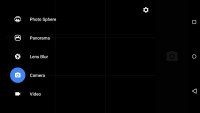





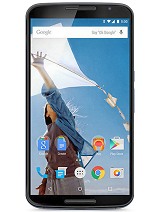
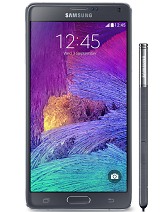




No comments :
Post a Comment